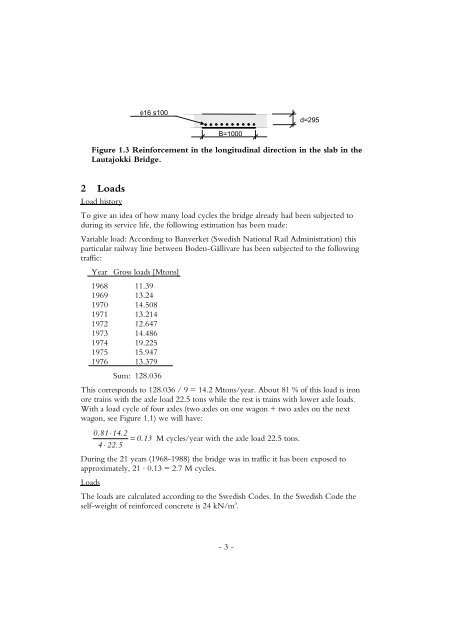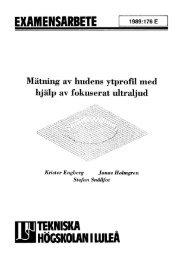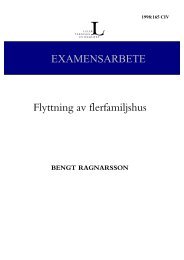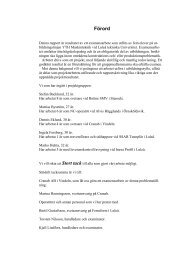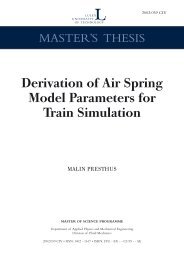LICENTIATE THESIS - Luleå tekniska universitet
LICENTIATE THESIS - Luleå tekniska universitet
LICENTIATE THESIS - Luleå tekniska universitet
Create successful ePaper yourself
Turn your PDF publications into a flip-book with our unique Google optimized e-Paper software.
φ16 s100<br />
B=1000<br />
- 3 -<br />
d=295<br />
Figure 1.3 Reinforcement in the longitudinal direction in the slab in the<br />
Lautajokki Bridge.<br />
2 Loads<br />
Load history<br />
To give an idea of how many load cycles the bridge already had been subjected to<br />
during its service life, the following estimation has been made:<br />
Variable load: According to Banverket (Swedish National Rail Administration) this<br />
particular railway line between Boden-Gällivare has been subjected to the following<br />
traffic:<br />
Year Gross loads [Mtons]<br />
1968 11.39<br />
1969 13.24<br />
1970 14.508<br />
1971 13.214<br />
1972 12.647<br />
1973 14.486<br />
1974 19.225<br />
1975 15.947<br />
1976 13.379<br />
Sum: 128.036<br />
This corresponds to 128.036 / 9 = 14.2 Mtons/year. About 81 % of this load is iron<br />
ore trains with the axle load 22.5 tons while the rest is trains with lower axle loads.<br />
With a load cycle of four axles (two axles on one wagon + two axles on the next<br />
wagon, see Figure 1.1) we will have:<br />
0.81 ⋅14.2<br />
= 0.13 M cycles/year with the axle load 22.5 tons.<br />
4 ⋅ 22.5<br />
During the 21 years (1968-1988) the bridge was in traffic it has been exposed to<br />
approximately, 21 · 0.13 = 2.7 M cycles.<br />
Loads<br />
The loads are calculated according to the Swedish Codes. In the Swedish Code the<br />
self-weight of reinforced concrete is 24 kN/m 3 .


